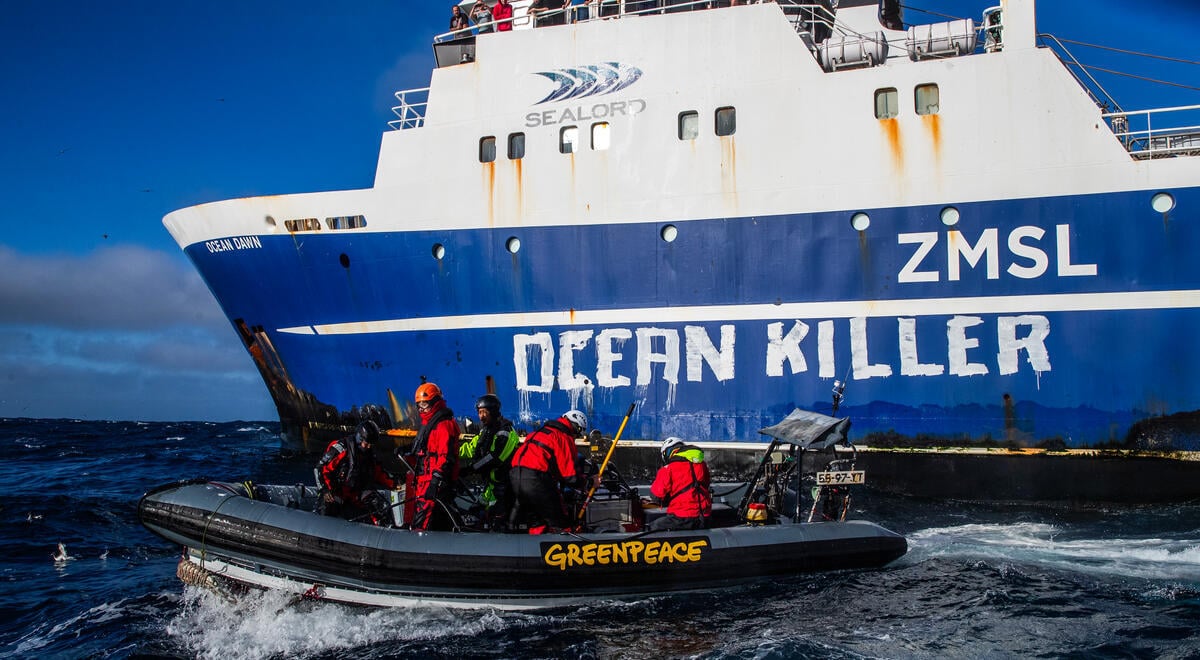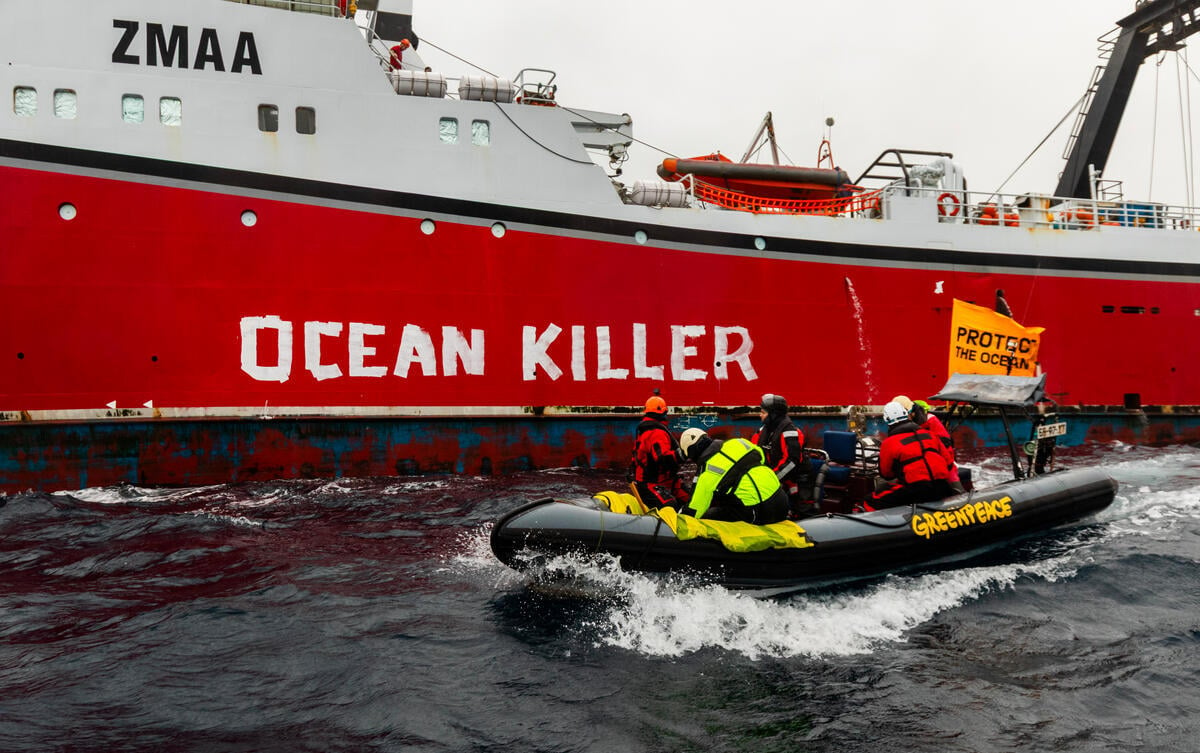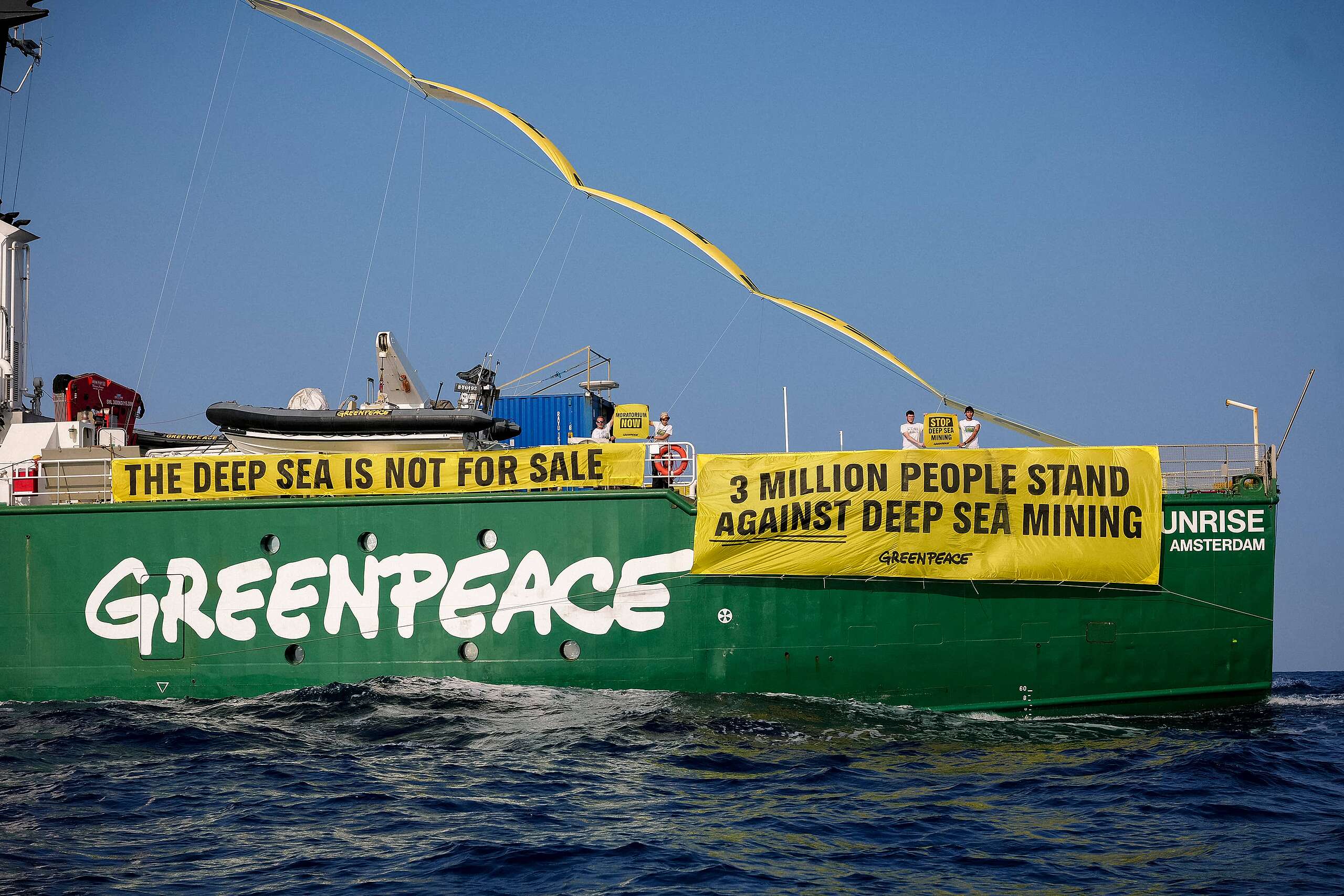An estimated 640,000 tonnes of abandoned or lost fishing equipment, or ‘ghost gear’, enter the ocean every year, equivalent in weight to more than 50 thousand double-decker buses. In total, they make up around 10% of the plastic waste in our oceans, entangling and killing marine life, warns a new Greenpeace Germany report, Ghost Fishing Gear Report, launched today.
The report comes as Greenpeace ship, Arctic Sunrise is surveying Mount Vema, a biodiverse seamount in the Atlantic, 1,000 kilometers off the coast of South Africa, where the remains of the once active fishing industry can still be found.
Speaking from the expedition at Mount Vema, Thilo Maack, of Greenpeace’s Protect the Oceans campaign, said: “Long after its initial use, this fishing gear goes on killing and maiming marine life, and polluting even remote ecosystems like the Mount Vema seamount. We have seen an amazing underwater world full of life and colours here. It’s utterly grim to see the legacy of destructive fishing in such a remote location like this.
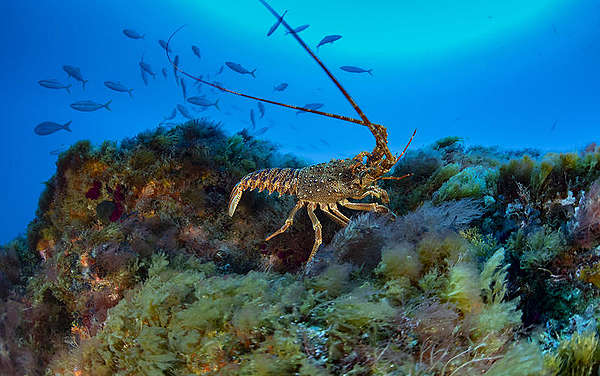
Wave surge constantly sweeping through beds of seaweed where a Tristan Rock Lobster (Jasus tristani) clings to an underwater peak of Vema, circled by shoals of Yellowtail Amberjacks. These lobsters were almost fished to extinction on Mount Vema seamount
“Even the Tristan Lobster, an iconic species of Mount Vema, that was fished to the brink of extinction twice is now showing signs of population recovery, thanks to a ban on bottom fishing being implemented here. This shows how oceans have an amazing ability to regenerate. But to properly recover and thrive into the future, Mount Vema and its unique ecosystem need to be completely off-limits to harmful human activities. The current protections for ecosystems in international waters are clearly not enough.”
The “Ghost Gear” report shows that 6% of all nets used, 9% of all traps, and 29% of all longlines (fishing lines that are several kilometers long) remain as pollution at sea. Not only does old fishing waste go on killing marine life, but it also seriously damages underwater habitats. Seamounts are particularly affected because they are often heavily fished due to the range of wildlife living around them.
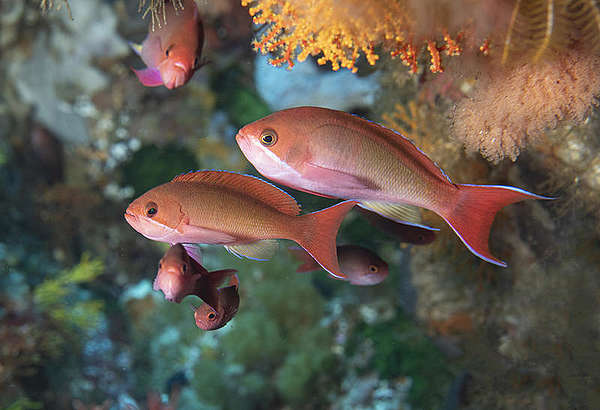
A small group of sea goldies sheltering under a coral-decorated overhang, Mount Vema seamount
Greenpeace is calling for stronger action against deadly ghost gear to be implemented, including agreement of a strong Global Ocean Treaty at the United Nations that could protect at least 30% of the world’s oceans by 2030, by putting it off-limits to harmful human activities, including industrial fishing.
Greenpeace New Zealand is also calling for fishing gear to be included in the Waste Minimisation Act. As the most dangerous form of marine debris, fishing gear mustn’t get off the hook when it comes to the plastics crisis.
Read more about what Ghost Gear does to the ocean in this blog post.

